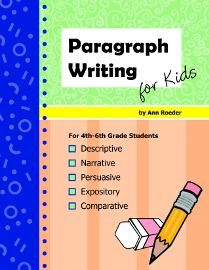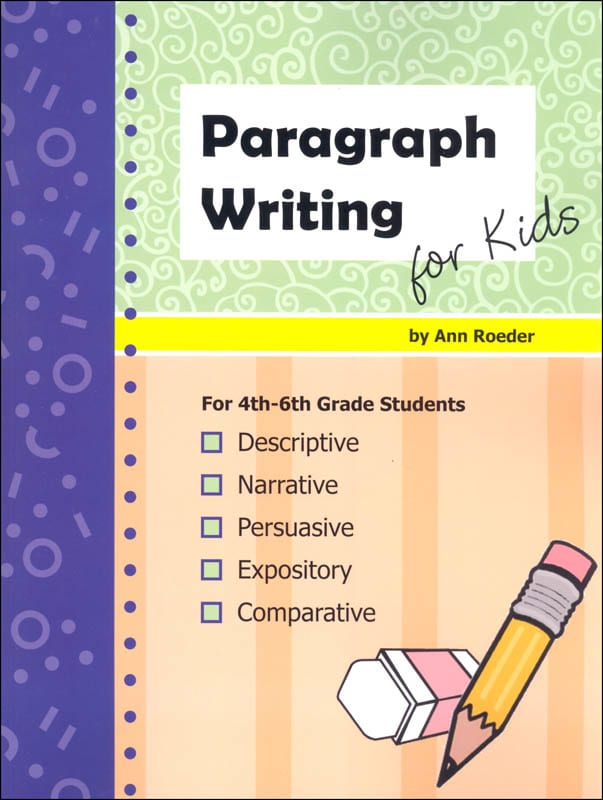Paragraph Writing for Kids helps students in grades four through six learn how to write five particular types of paragraphs: descriptive, narrative, persuasive, expository, and comparative. This book should be particularly helpful for students who have trouble organizing their thoughts.
The book has five units─one for each of the five types of paragraphs. The units can be used in any order you wish, and you might also use individual units on their own alongside your other language arts curricula.
Each unit presents example paragraphs and pre-selected material for student exercises that teach the steps for writing each type of paragraph. Students are also given prompts to help them come up with their own topics for each type of paragraph. They are required to write only one complete paragraph for each unit, working through all of the steps of planning, drafting, writing, editing, and rewriting.
For instance, the descriptive writing unit has students work with a picture of their own choosing that has plenty of detail. Students are taught how to describe details as well as the overall tone of the picture. After accumulating lists of more details than they can use, they identify the most interesting section of the picture. This allows them to focus their writing more narrowly on one topic within the picture, while still having enough material to write about. Along the way, they learn to create an outline (using one of the forms at the back of the book), write a topic sentence, organize their supporting details, use transitional words and phrases, and write a concluding sentence. They then write a rough draft and a final draft.
Exercises within each of the units have students work with sample material before coming up with their own. These exercises ask students to organize the given details into topical areas, select the best topic from four possibilities, sort details into a logical sequence, identify the most convincing arguments, and other such tasks that prepare them to write their paragraph for that unit. The exercises are limited in scope and number, so they aren’t overwhelming. Also, they are purposefully designed to lay the groundwork for the student composition for that unit, unlike the busywork exercises in some grammar and composition textbooks. Parents or teachers will probably want to download the free answer key for the exercises from the publisher’s website.
In my opinion, students should be able to complete a unit in two to four weeks, so Paragraph Writing for Kids serves as a supplement. The publisher of this book, Common Sense Press, also publishes Wordsmith Apprentice for students in fourth through sixth grade. They suggest using Paragraph Writing for Kids as a follow-up to Wordsmith Apprentice.
While the lessons are written directly to the students, and much of the work can be done independently, a parent or teacher might need to explain some of the exercises, and students will need guidance as they select their own topics and write their own compositions.
The structured lessons should prove helpful for students who have trouble coming up with ideas as well as for those who need help selecting and organizing their ideas.










